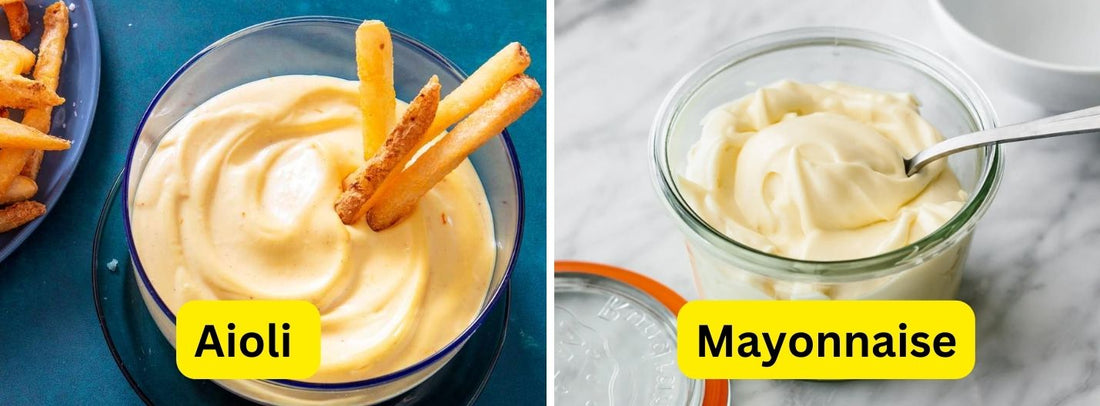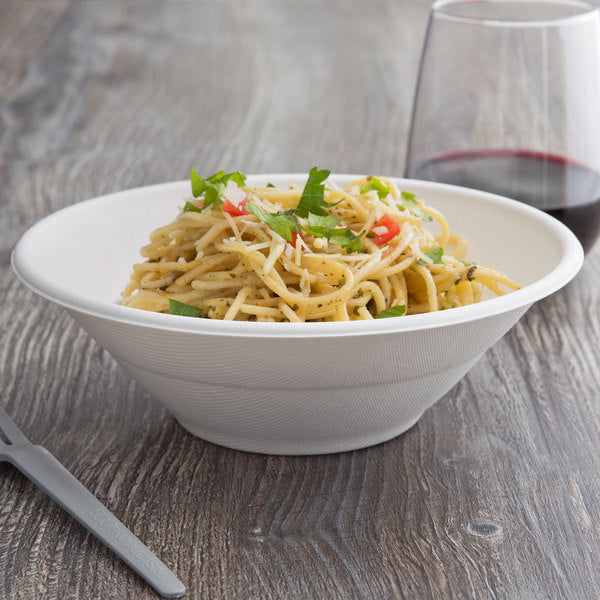Aioli vs Mayonnaise are often mistakenly interchanged, yet these creamy condiments possess distinct characteristics. While both are emulsions of oil and water, their primary ingredients, flavor profiles, and culinary applications diverge significantly. This exploration delves into the nuances between these two sauces, providing clarity on their appropriate uses.
- How To Store Chutney For Better Shelf Life. Tips on Storing Chutney
- 15 Best Butter Substitutes Baking That You Should Know
- Exploring the Most Expensive Cheese List In The World
Before explore the difference between Aioli vs Mayonnaise, let’s review the general informations of aioli vs mayonnaise.
Understanding Aioli
What is Aioli?
Aioli is a rich, creamy sauce primarily made from garlic and olive oil. It is an emulsion, meaning the oil and water (from the garlic) are combined to create a smooth texture. Originating from the Mediterranean region, aioli is a cornerstone of Provençal cuisine.

Flavor and Texture
Aioli boasts a bold, pungent flavor predominantly from garlic, balanced by the richness of olive oil. The texture is typically smooth and creamy, with a slightly thicker consistency than mayonnaise.
Culinary Uses
Aioli's intense garlic flavor makes it a versatile condiment with a variety of applications:
- Dipping sauce: A classic accompaniment for seafood, vegetables, and french fries.
- Spread: Can be used as a flavorful spread for sandwiches or crostini.
- Marinade: Imparts a delicious garlic flavor to meats and poultry.
- Flavor enhancer: Adds depth to soups, stews, and sauces.
How to Make Aioli?
Traditionally, aioli is made by slowly incorporating olive oil into crushed garlic using a mortar and pestle. However, modern methods often involve using a food processor or blender. The key to a successful aioli is to gradually add the oil while whisking continuously to create a stable emulsion.
Understanding Mayonnaise
What is Mayonnaise?
Mayonnaise is a thick, creamy sauce that is an emulsion of egg yolks, oil, and an acidic ingredient such as lemon juice or vinegar. It has a rich, pale yellow color and is a staple in many cuisines worldwide.

Flavor and Texture
Mayonnaise offers a mild, tangy flavor with a hint of richness from the egg yolks. Its texture is smooth, creamy, and slightly thick. The balance of ingredients contributes to its characteristic taste and consistency.
Culinary Uses
Mayonnaise is incredibly versatile in the kitchen. Its neutral flavor profile allows it to complement a wide range of dishes. Some common uses include:
- Base for other sauces: It's the foundation for many sauces like aioli, tartar sauce, and Caesar dressing.
- Condiment: Often used as a spread for sandwiches, burgers, and wraps.
- Salad dressing: Can be mixed with other ingredients to create various salad dressings.
- Baking: Used as a moistening agent in cakes and cupcakes.
How to Make Mayonnaise
Making mayonnaise at home might seem intimidating, but with the right technique, it's achievable. The key is to slowly incorporate the oil into the egg yolks while whisking continuously. A touch of mustard can help stabilize the emulsion.
Basic ingredients:
- Egg yolks
- Oil (neutral flavor like canola or vegetable)
- Lemon juice or vinegar
- Salt and pepper
While there are various methods, the most common involves whisking the egg yolks with the acidic ingredient and gradually adding the oil in a thin, steady stream. Continue whisking until the mixture thickens and forms a stable emulsion. Season with salt and pepper to taste.
Now, in the next section, let’s compare aioli vs mayonnaise to understand deeply how to use them right.
Comparison Aioli vs Mayonnaise
Key Differences Between Aioli vs Mayonnaise
Aioli and mayonnaise, while both emulsions, exhibit distinct characteristics in terms of ingredients, flavor profile, texture, and culinary applications.
- Ingredients: Aioli is traditionally composed of garlic and olive oil, whereas mayonnaise typically incorporates egg yolks, oil, and an acidic element such as lemon juice or vinegar.
- Flavor Profile: Aioli offers a robust, pungent flavor derived from garlic, while mayonnaise presents a milder, tangy taste profile.
- Texture: Aioli tends to possess a thicker, richer texture due to its core ingredients, whereas mayonnaise is generally smoother and lighter in consistency.
- Culinary Applications: Aioli's bold flavor profile lends itself to specific applications as a dipping sauce, spread, or marinade. In contrast, mayonnaise is more versatile, serving as a foundation for various sauces, a condiment, and an ingredient in numerous dishes.

Aioli vs Mayonnaise: When to Choose?
The selection between aioli and mayonnaise hinges on the desired flavor profile and the specific culinary context.
- Aioli: Ideal for enhancing the flavor of seafood, grilled meats, vegetables, and French fries. Its robust character complements Mediterranean-inspired cuisine.
- Mayonnaise: A more adaptable condiment suitable for sandwiches, salads, potato salad, chicken salad, and baked goods. Its neutral taste profile allows for broader culinary applications.
While there may be instances where one can be substituted for the other, it is essential to consider the potential impact on the overall flavor of the dish. For example, aioli can be used in place of mayonnaise in certain potato salad recipes to impart a stronger garlic flavor, but substituting mayonnaise for aioli would significantly alter the dish's taste.
Conclusion
Aioli and mayonnaise, while similar in texture, differ significantly in flavor and use. Aioli’s bold garlic taste makes it ideal for specific dishes, while mayonnaise’s mild flavor offers versatility. Understanding these differences will help you make informed choices in the kitchen. Ultimately, the best choice depends on the desired taste and the dish itself.







